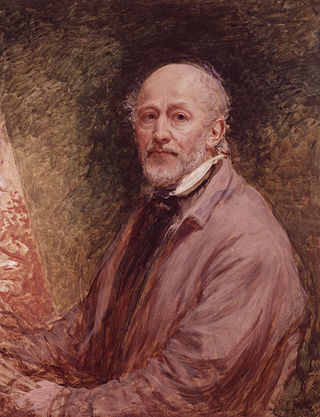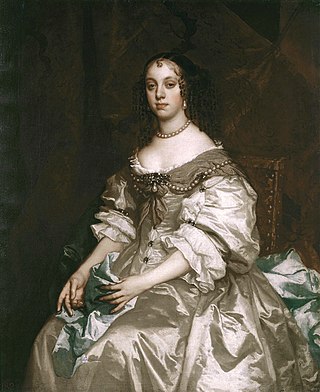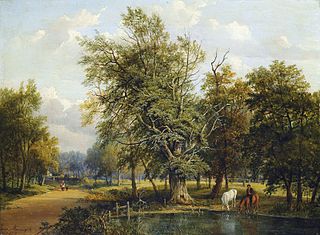
Thomas Phillips was a leading English portrait and subject painter. He painted many of the great men of the day including scientists, artists, writers, poets and explorers.

Clarkson Frederick Stanfield was a prominent English painter who was best known for his large-scale paintings of dramatic marine subjects and landscapes. He was the father of the painter George Clarkson Stanfield and the composer Francis Stanfield.

John Linnell was an English engraver, and portrait and landscape painter. He was a naturalist and a rival to the artist John Constable. He had a taste for Northern European art of the Renaissance, particularly Albrecht Dürer. He also associated with the amateur artist Edward Thomas Daniell, and with William Blake, to whom he introduced the painter and writer Samuel Palmer and others of the Ancients.

Sir George Hayter was an English painter, specialising in portraits and large works involving sometimes several hundred individual portraits. Queen Victoria appreciated his merits and appointed Hayter her Principal Painter in Ordinary and also awarded him a Knighthood in 1841.

Robert Smirke was an English painter and illustrator, specialising in small paintings showing subjects taken from literature. He was a member of the Royal Academy.

James Stark was an English landscape painter. A leading member of the Norwich School of painters, he was elected vice-president of the Norwich Society of Artists in 1828 and became their president in 1829. He had wealthy patrons and was consistently praised by the Norfolk press for his successful London career.
Events from the year 1792 in art.

Horatio McCulloch, sometimes written MacCulloch or M'Culloch, was a Scottish landscape painter.

Ramsay Richard Reinagle was an English portrait, landscape, and animal painter, and son of Philip Reinagle.

John Partridge was a British artist and portrait painter. Named 'portrait painter-extraordinary' to Queen Victoria, his pictures depict many of the notable figures of his time.

The title of Principal Painter in Ordinary to the King or Queen of England or, later, Great Britain, was awarded to a number of artists, nearly all mainly portraitists. It was different from the role of Serjeant Painter, and similar to the earlier role of "King's Painter". Other painters, for example Nicholas Hilliard had similar roles with different titles. "Principal Painter in Ordinary", first used for Sir Anthony Van Dyck, became settled as the usual title with John Riley in 1689.

Giles Firmin Phillips (1780–1867) was an English artist and author. He painted landscapes and river scenes, primarily of the river Thames. His paintings were exhibited, among other venues, at the Royal Academy from 1836 - 1858. He is the author of several books on painting and lithography.
James Green (1771–1834) was an English artist, known as a portrait-painter.

Scottish art in the nineteenth century is the body of visual art made in Scotland, by Scots, or about Scottish subjects. This period saw the increasing professionalisation and organisation of art in Scotland. Major institutions founded in this period included the Institution for the Encouragement of the Fine Arts in Scotland, the Royal Scottish Academy of Art, the National Gallery of Scotland, the Scottish National Portrait Gallery and the Glasgow Institute. Art education in Edinburgh focused on the Trustees Drawing Academy of Edinburgh. Glasgow School of Art was founded in 1845 and Grays School of Art in Aberdeen in 1885.

Norman Macbeth was a Scottish portraitist.

John Graham-Gilbert was a Scottish portrait painter and art collector.

Jane Nasmyth was a Scottish landscape painter of the Nasmyth School in Edinburgh. She was the daughter and student of the portrait and landscape painter Alexander Nasmyth.

Joseph Swan was an engraver and publisher active in Glasgow in the early nineteenth century.
















